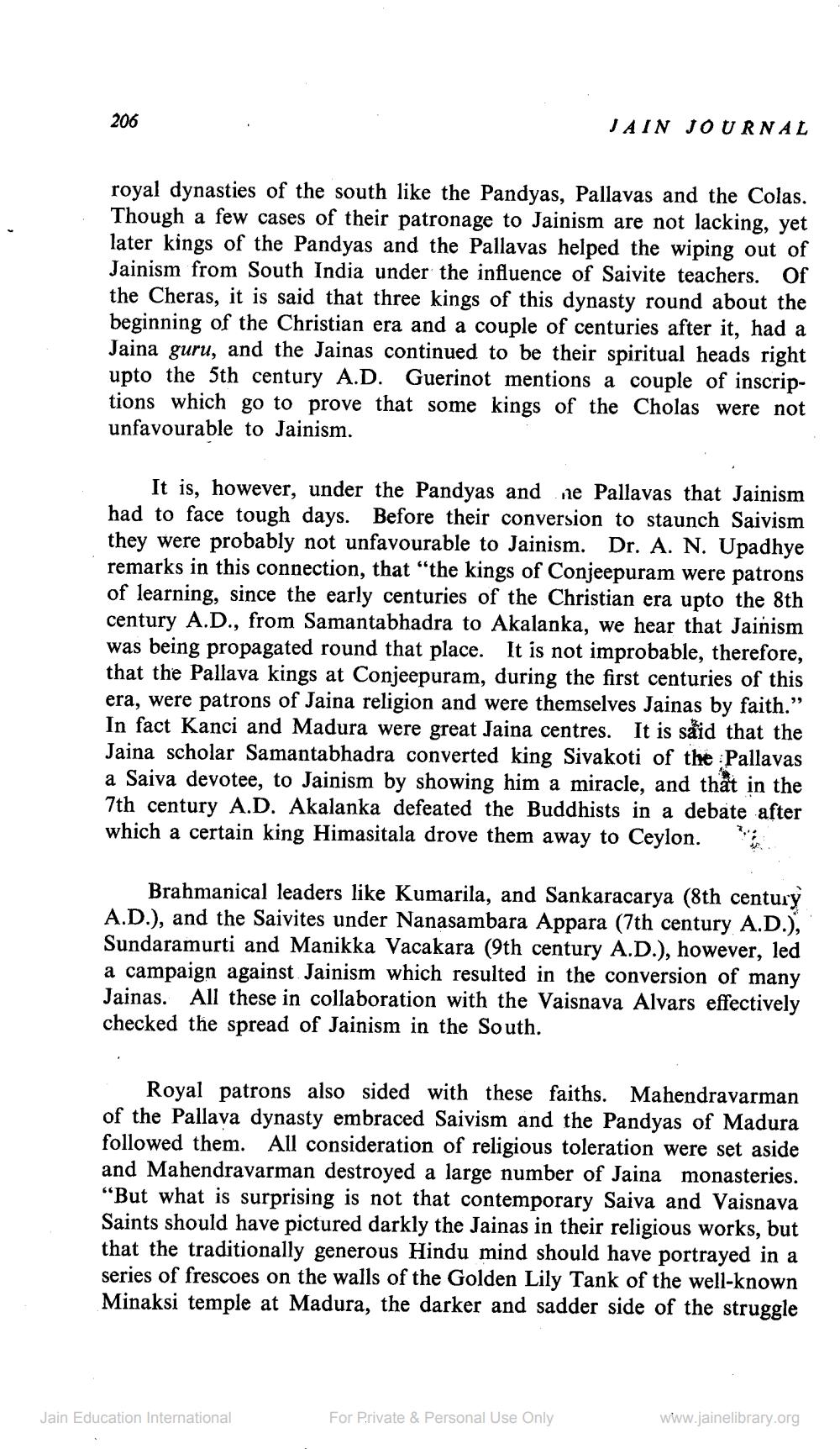________________
206
JAIN JOURNAL
royal dynasties of the south like the Pandyas, Pallavas and the Colas. Though a few cases of their patronage to Jainism are not lacking, yet later kings of the Pandyas and the Pallavas helped the wiping out of Jainism from South India under the influence of Saivite teachers. Of the Cheras, it is said that three kings of this dynasty round about the beginning of the Christian era and a couple of centuries after it, had a Jaina guru, and the Jainas continued to be their spiritual heads right upto the 5th century A.D. Guerinot mentions a couple of inscriptions which go to prove that some kings of the Cholas were not unfavourable to Jainism.
It is, however, under the Pandyas and ne Pallavas that Jainism had to face tough days. Before their conversion to staunch Saivism they were probably not unfavourable to Jainism. Dr. A. N. Upadhye remarks in this connection, that “the kings of Conjeepuram were patrons of learning, since the early centuries of the Christian era upto the 8th century A.D., from Samantabhadra to Akalanka, we hear that Jainism was being propagated round that place. It is not improbable, therefore, that the Pallava kings at Conjeepuram, during the first centuries of this era, were patrons of Jaina religion and were themselves Jainas by faith.” In fact Kanci and Madura were great Jaina centres. It is said that the Jaina scholar Samantabhadra converted king Sivakoti of the Pallavas a Saiva devotee, to Jainism by showing him a miracle, and that in the 7th century A.D. Akalanka defeated the Buddhists in a debate after which a certain king Himasitala drove them away to Ceylon. Po
Brahmanical leaders like Kumarila, and Sankaracarya (8th century A.D.), and the Saivites under Nanasambara Appara (7th century A.D.). Sundaramurti and Manikka Vacakara (9th century A.D.), however, led a campaign against Jainism which resulted in the conversion of many Jainas. All these in collaboration with the Vaisnava Alvars effectively checked the spread of Jainism in the South.
Royal patrons also sided with these faiths. Mahendravarman of the Pallava dynasty embraced Saivism and the Pandyas of Madura followed them. All consideration of religious toleration were set aside and Mahendravarman destroyed a large number of Jaina monasteries. “But what is surprising is not that contemporary Saiva and Vaisnava Saints should have pictured darkly the Jainas in their religious works, but that the traditionally generous Hindu mind should have portrayed in a series of frescoes on the walls of the Golden Lily Tank of the well-known Minaksi temple at Madura, the darker and sadder side of the struggle
For Private & Personal Use Only
Jain Education International
www.jainelibrary.org




